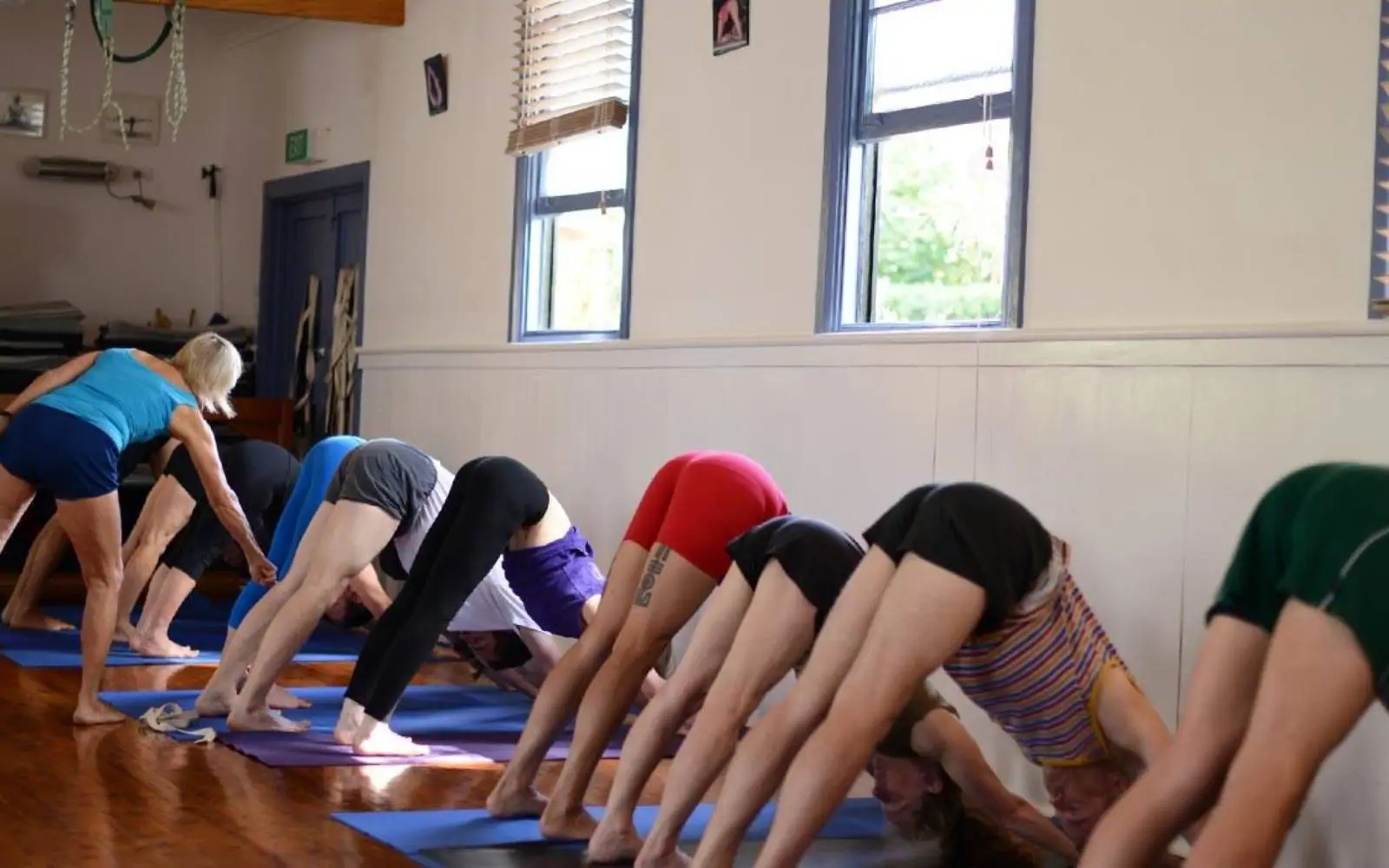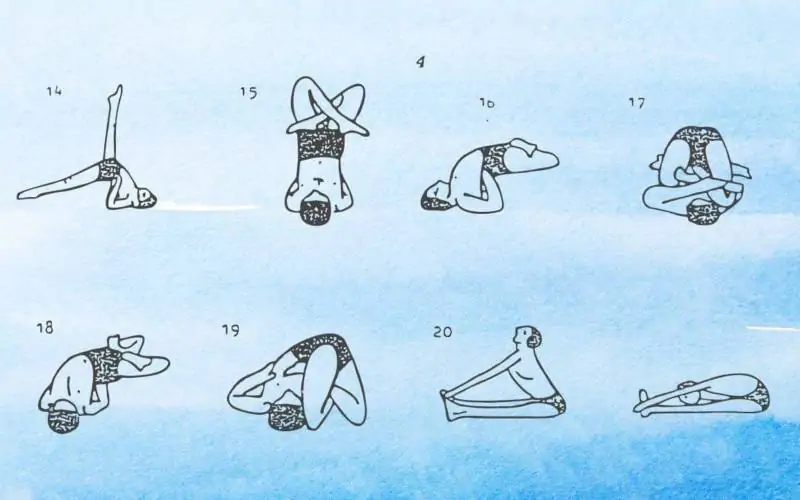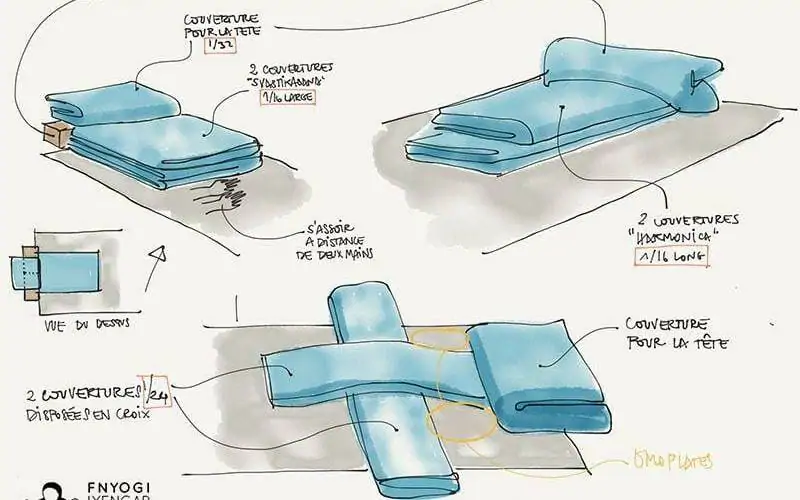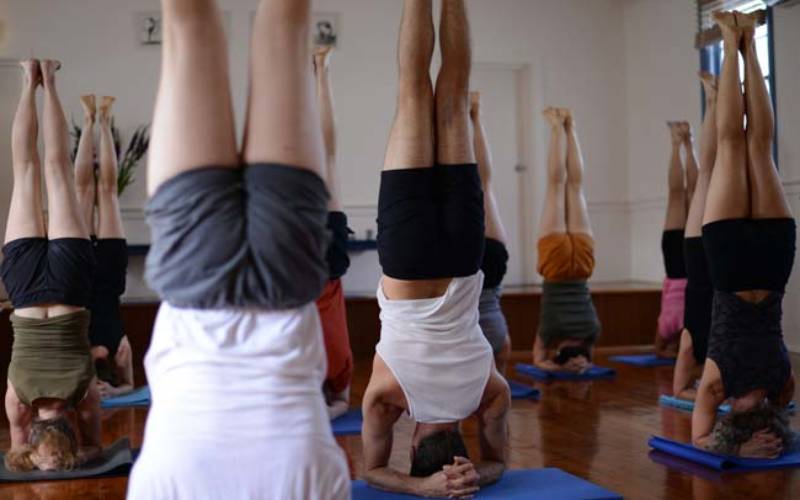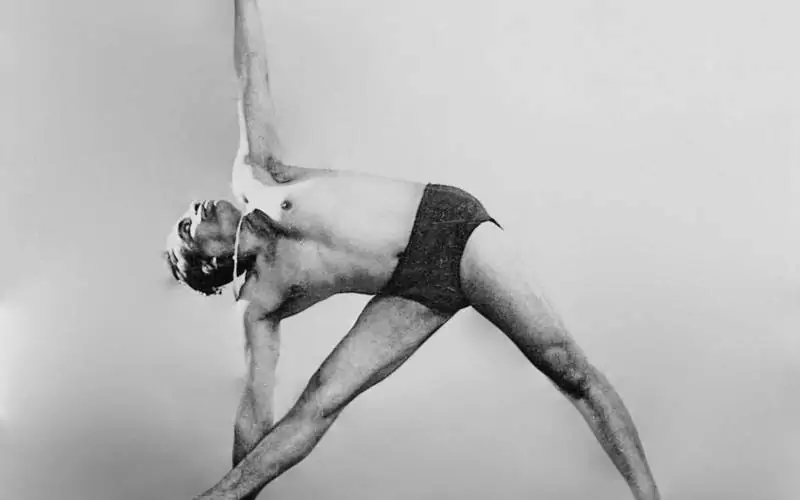Yoga is a study of cause and effect; the way desires and results so often differ. It is a study of the effects of our actions upon our consciousness and the way the residue from our actions propels us to further action. This in turn causes us pain and suffering in our lives. What we want and what we get are most often worlds apart.
In the Yoga sutras Patanjali identifies:
The cause of pain is the association or identification of the seer with the seen and the remedy lies in their dissociation.
Patanjali indicates that pain ensues when we identify with our experience. A car battery goes flat and we suffer because of a missed meeting, or something we desire remains unfulfilled and we suffer. The pain exists in the lack of fulfilment, not the battery. The remedy lies in recognising the way we link ourselves to objects of the world (the seen) through our desires. In effect, our Yoga Practices should provide the means to study cause and effect – how the underlying intention of our actions contains unspoken desires and fears. In studying cause and effect, our actions become harmonious and integrated and we suffer less.
In the Yoga sutras, Patanjali both details what he knows about the process of human development and learning and explains the practices involved in coming to this understanding. Practice-based knowledge has certainty and accuracy. Patanjali’s work is therefore not a set of theories, as theories relate to ideas or conceptions that have not been confirmed. Patanjali is sharing his knowledge from experience and explaining his practices so that others can also undertake them and find out the truth of what he is saying. In this sense, the sutras contain details, proven by practice, about the way people learn and evolve.
We apply Patanjali’s Yoga Practices, and in this process of doing so, we rely on the accuracy of his findings – knowledge he has accumulated about human evolution. From this, we mould our methods and approaches to practice and to teaching. For example, we know that people have different inclinations – either more devotional or intellectual; that people are more or less intense in their commitment to conscious living; that people are either held in desire of external outcomes from their practice or committed to spiritual evolution; and that people are blind to themselves and deluded about their capacity to be clear of mind and present in the moment. It is because of this knowledge that methods such as technique, timings, sequence, and repetition are developed and used in our teaching. We aim to apply and evaluate our methods of teaching so we can more effectively teach the Yoga Practices and the disciplines as detailed by Patanjali.
In summary, in the Yoga sutras, Patanjali outlines the pains and obstacles that arise in our lives and how these pains and obstacles are created and maintained. He describes how people are inclined to follow certain paths in life and that some people approach life with intensity, others earnestly and with a mild degree of interest. He explains human evolution so that fundamental characteristics seen in our behaviours and thoughts can be understood and changed. The Yoga Practices are given so that we can address obstacles and pains in our life, and recognise our tendencies and the way they influence our choices and behaviours. The Yoga Practices are categorised and advice is given as to the Yoga Practices that will be most effective for different types of people. Details are given about the types of disciplines that must be applied within the Yoga Practices and the impact of the disciplines and the Yoga Practices upon human development. Patanjali shares his understanding of the way people learn and evolve and provides guidance on how to live peaceful and contented lives.
Yoga Practices
Patanjali offers us two sets of Yoga Practices by which to examine our actions and their effects:
- Abhyasa / Vairagya (practice and renunciation), often referred to as the Twin Pillars of Yoga.
- Kriya Yoga, comprising:
- tapas – burning zeal in practice;
- svadhyaya – self-study;
- isvara pranidhana – giving up of “I” ness, surrender.
Patanjali indicates that Yoga Practices should apply either action and renunciation, or tapas, self-study, and surrender so that we are able to study our actions and liberate our lives from suffering. But what does this mean in practice? How are the Yoga Practices of the Twin Pillars or Kriya Yoga to be achieved?
BKS Iyengar has immersed himself in a lifetime of practice and study of the subject of Yoga. His study of Yoga has defined a set of asana and pranayama practices – practices that the sadhaka can apply in order to study cause and effect.
Iyengar’s main concern, and great strength as a teacher, is to provide the means to engage in the Yoga Practices defined by Patanjali. For the genuine sadhaka or aspirant, the study of consciousness entailed in a practice presents a most difficult challenge. If our practice involves the refinement of perception and the study of cause and effect then how will we test the veracity of our perception? Patanjali acknowledges that perception of objects changes dependent on the position of the viewer. The challenge involves differentiating between what is real and that which changes or is coloured by perception. This is further complicated by our own involvement in the experience – we are not independent observers and our capacity to witness is compromised by our involvement. Iyengar posits the question in the following way:
… how can subject work on subject, consciousness on consciousness? How, in other words, can one’s eyes see one’s own eyes?
The senses of perception become ensnared in experience and taint the clarity. This can be seen in our capacity to be affected by advertising, for example. These images promise more than they deliver and yet we are linked by desire to the images advertising projects in our subconscious mind. They play to our desires and our fears. Patanjali refers to the klesas (afflictions) and their impact upon our perception and, therefore, our world. Patanjali defines the klesas at three levels:
- Intellectual – ‘lack of spiritual knowledge combined with pride or arrogance inflates the ego, causing conceit and the loss of one’s sense of balance.’
- Emotional – ‘succumbing to excessive desires and attachments or allowing oneself to be carried away by expressions of hatred, creates disharmony between body and mind, which may lead to psychosomatic disorders.’
- Instinctive – ‘the desire to prolong one’s life and concern for one’s own survival, makes one suspicious in dealings with others, and causes one to become selfish and self-centred.’
The methods devised and applied by each teacher will be distinctive to that individual teacher. Defined from their own learning experience, they should be applied to overcome the afflictions and obstacles we encounter in our lives. Methods are not just applied to improve our asana presentation in the body, nor our flexibility alone. In effect, we can use our methods to gain knowledge from experience; to experience what Patanjali was communicating from his own practice experience. We shape our methods to undertake the Yoga Practices defined by Patanjali. In this way, the methods we apply should bring us into contact with our consciousness to apply action/restraint, or tapas/self-study/surrender, in order to study the cause and effect of our actions.
Yoga Methods
Considering this, Iyengar’s way of teaching can be defined as four methods. These are:
- Technique
- Timings
- Sequencing
- Repetition
- Technique comprises alignment, precision in performance, and use of props. The study of particulars in asana and pranayama are classified under technique and yet these form but one aspect of our overall practice.
- Timings involve the use of holdings to study the asana, to change one’s capacity, and to study oneself.
- Sequence is the ordering of asanas in the practice to broaden the understanding and perception of an asana and of oneself.
- Repetition is applied when we return again and again over time to mature the asana.
The use of paradigms of practice and hierarchies provides a means to refine our consciousness and take the inward journey of Yogasana. If we change the modes of practice (to learn, to study, to practice, to consolidate, to mature etc) we adopt the means by which we can refine our interaction with these asana objects. In the article Exploring Iyengar Yoga through technique, timings, sequence, and repetition, posted on the website www.yogamandir.com.au, I have attempted to define these methods in greater detail.
Further to the methods, Iyengar Yoga applies the eight disciplines (eight limbs) within our daily practices. Iyengar has defined a means to apply the disciplines within the practice of asana and pranayama. For example, we conduct our practices applying the external and internal observances of yama and niyama. We restrain the senses (pratyahara) and apply samyama (dharana, dhyana, samadhi) within our practice. These disciplines support us in undertaking the Yoga Practices of Patanjali. Without honesty in approach, contentment in execution, cleanliness in action, etc, we cannot progress in a study of actions. We apply one-pointed attention and continuity in concentration as we proceed along this path. Iyengar has developed a schema whereby the practices of asana and pranayama apply the disciplines of the eight limbs.
Teachers often adopt the role of instructor and parent. Because the language of instruction guides the encounter with an asana in the classroom, it lends itself most easily to descriptions of how to do the asanas. The experience in the senses and the perception of the student are most often left as outcomes. Just like parents, teachers guide and nurture the student. But is this appropriate?
A disjunction exists between what we assume to do as teachers and the outcomes in the student’s learning. The question remains whether they are ever reconciled. Teaching and learning are not concurrent; they do not happen in equal measure or at the same time. More teaching does not result in greater understanding necessarily. A student may be taught something that takes years for them to learn, to comprehend. This is important because if we are to focus only on the teaching side of the equation then the repository of the learning, and therefore the focus, is only on what the teacher knows. It becomes teacher-orientated. It becomes about the teacher knowledge. This is seductive for both teacher and student. We all like our authorities to be knowledgeable and we like to have faith in them but Patanjali asks us to go and verify for ourselves. The only knowledge that is real is Pramana – knowledge from experience. Anything else lacks veracity.
A teacher’s relationship to their students can be understood as a reflection of where the teacher and the students are along the great paths: karma, bhakti, jnana, and Yoga margas. The paths we follow are determined by our response to the klesas. If we are held by the emotional afflictions, we are predominantly on the bhakti marga; if the mental afflictions are dominant in our character, we are on the jnana marga; and if we are held by the instinctive affliction – fear of death or clinging to life – we are on the karma marga. If unaware of the filters to our perception, teachers on the bhakti marga may be committed to their student, and yet being held by strong likes and dislikes the teacher’s emotions about the student often get in the way of them seeing clearly the most effective response to the student. Those on the jnana marga, misplacing their interpretations of experience as fact, may minimise the capacity of the asana to affect the mind and will be reluctant to use physical adjustment of asana. Those on the karma marga may be overly anxious about their students doing well in the asana. To them, having evidence of the students’ progress is important; the students’ progress in the asana becomes the confirmation to the teacher that they are a good teacher. Through our filters, we see our students: what we perceive is a reflection of our prejudices. Yet, for the student, their interpretation of the class, the teaching, and thus their capacity to learn is also coloured by the margas: their experience is not what we see or would like it to be.
A student held by the emotional afflictions – full of likes and dislikes – may read the physical contact of a hands-on adjustment as either a like or a dislike by the teacher and conducts themself accordingly. If they read it as the teacher liking them, they try harder and, if the teacher does not continue to adjust them, they become despondent and their practice may decline. Or, if they read it as the teacher not liking them, they may not return. A student full of pride and held in their ideas of who they are may either be crushed mentally when given a strong physical adjustment, as it is too challenging of their self-perception or resist more and be unable to let the adjustment penetrate, as they are busy protecting their ideas about themselves. A karma marga student will work at their asana and often, when they have accomplished what they feel is good asana, they leave as this is the end of their understanding of what they are doing. This is often perplexing to teachers, as they have often had relationships with these students where they “reward” the students’ practice by helping them refine their asana and see the students as doing very well, and then when these students leave it does not make sense to the teacher.
Yoga is a Heuristic Subject
Yoga may be taught but it must also be learnt. Yoga is a heuristic subject – ‘one learns from oneself and one has to teach oneself’ – yet that is not to say that a teacher is not required. The methods one applies in order to learn will change in relation to the situation and the time. What is possible in one moment with a student may not be possible with another student or with the same student at a different time. A student cannot be taught until they are available and they are in the right time and place within themselves. By the application of their methods, a teacher observes, structures, shapes, and disciplines the student in this encounter so that they do not act from desire and aversion. In this way, a teacher inducts the student into the practice. The path of a practice cannot be taught.
To go still further, a teacher will by necessity act with restraint in providing answers to the student’s need to know. The desire for certainty is great within the individual and will cause them to look to the teacher for answers and yet by providing the answers the student’s enquiry is undermined. How the student overcomes the obstacles and addresses the klesas is the learning process and for this process, our application of method is the way.
